Minnesota has gone a step further than many other jurisdictions in trying to report and monitor data on how well publicly funded programs are meeting the needs of key populations.
The Minnesota Management and Budget (MMB) agency uses outcome monitoring data as part of a comprehensive effort to give policymakers a more complete understanding of how well government programs are operating. That information then can guide efforts to effectively distribute state resources and improve outcomes for residents.
To ensure transparency, the agency’s staff maintains an online dashboard that tracks 40 key measurements of the state’s well-being across eight priority areas, ranging from strong and stable families and communities to efficient and accountable government services. For each indicator, MMB reports the data statewide and for specific populations—with details broken down by race/ethnicity, gender, income, location, and disability status. MMB encourages state agencies to incorporate this information, along with other types of evidence, into their budget documents. The agency also provides extensive training to staff and commissioners on how to use outcome data to inform their work.
MMB routinely meets with leaders from state agencies and other government stakeholders to help them use data to establish priorities, identify ways to improve outcomes, and determine potential investment areas.
For the past three years, one of the focuses of these efforts has been child and family well-being. To support ongoing discussions, MMB partnered with other state agencies to develop a dedicated Results for Children performance dashboard that tracks outcomes for key populations from early childhood through postsecondary education. The dashboard can expand state and local policymakers’ understanding of how well the state is preparing the younger generation for the future.
MMB has incorporated performance information into the state budget process to encourage its use beyond tracking and reporting outcomes. In preparation for the governor’s most recent biennial budget request, the agency convened data-driven interagency conversations to examine the availability of evidence showing that agency budget proposals would produce the outcomes sought by the governor.
Minnesota’s Homework Starts with Home initiative, begun in early 2018, evolved from these conversations and developed in part from evaluations of two programs aimed at reducing homelessness among children enrolled in public and charter schools. The data on both demonstrated the benefits of increased housing stability, including higher incomes for families and improved school attendance for children. Based on these findings, a partnership of state agencies and philanthropic organizations asked providers to submit proposals to implement this initiative based in the state Education Department. The University of Minnesota will help ensure that these projects are evaluated rigorously so the data can inform future work.
Similarly, the state has increased funding for programs proved effective at achieving meaningful results. Family home visiting, for example, has been recognized by interagency leaders because it has shown strong evidence of positive outcomes. Making this program a priority, the governor’s biennial budget for fiscal years 2018-19 proposed additional resources to expand home visiting services for pregnant and parenting teens. With the support of the Legislature, an increase of $12 million was authorized in the biennial budget.
This investment should help ensure that there are fewer babies with low birth weight, more mothers who breastfeed for at least eight weeks, and lower rates of maternal depression. Minnesota stakeholders can continue to monitor these outcomes, each of which is strongly linked to longer-term child development and well-being in the Results for Children dashboard.
“We have an obligation to make sure taxpayer resources are being used in the most effective way possible,’’ said Myron Frans, the MMB commissioner. “We use research on the evidence of program effectiveness to help us achieve that goal.”
The use of outcome monitoring data combined with other evidence, along with cross-agency collaboration on statewide goals, enables public officials in Minnesota to make informed decisions and allocate resources effectively.
For more information:
- “Statewide Outcomes and Results Based Accountability Instructions,” Minnesota Management and Budget.
Written by Sara Dube and Mariel McLeod. Sara Dube is a director and Mariel McLeod is an associate with the Pew-MacArthur Results First Initiative.
Key Information
Source
Results First™
Publication DateOctober 18, 2018
Read Time2 min
ComponentOutcome Monitoring
Resource TypeWritten Briefs
Results First Resources
Evidence-Based Policymaking Resource Center
Share This Page
LET’S STAY IN TOUCH
Join the Evidence-to-Impact Mailing List
Keep up to date with the latest resources, events, and news from the EIC.



